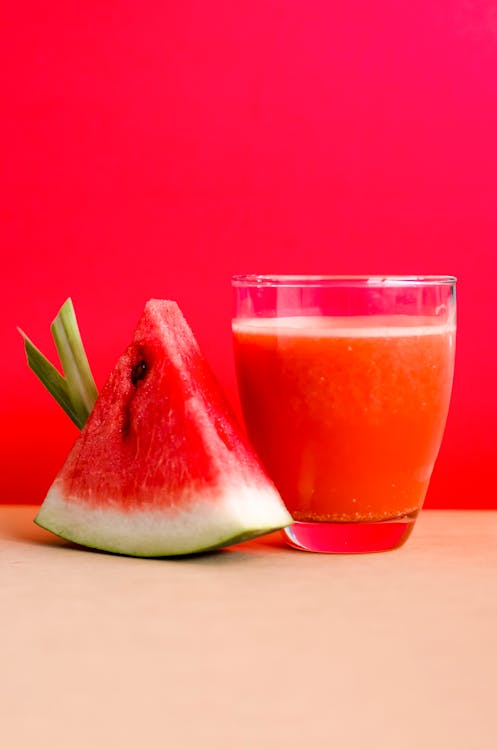In a world flooded with a multitude of drinks, each competing for our attention, there exists a simple and frequently underappreciated rival – diluted juice. This unassuming elixir, born of old traditions and reinterpreted for modern health-conscious consumers, has created its place in the beverage landscape. With a history grounded in the pragmatism of conserving valuable fruit liquids, diluted juice has developed into a health-conscious, tasty alternative that achieves a compromise between fulfilling our demand for flavour and our goal for wellbeing. It’s a drink that mixes tradition with contemporary sensibilities, delivering a refreshing choice that not only tantalizes the taste senses but also tackles the problems around sugar intake and general health. In this exploration of diluted juice, we’ll journey through its origins, the various methods of preparation, the potential health benefits, and the controversies that swirl around it, ultimately shedding light on why this simple, diluted concoction has earned a place of significance in our daily lives.
Table of Contents
1. A Brief History of Diluted Juice
To comprehend the notion of diluted juice thoroughly, it’s vital to study its beginnings. Diluted juice has been a part of human history for generations. The notion of diluting fruit juices may be traced back to ancient civilizations that utilised water to lessen the strength of the tastes and let the valuable fruit juice last longer.
The oldest accounts of diluted juice may be found in ancient Egypt, when people would dilute pomegranate and grape juices with water. This not only helped the juice go farther but also made it more acceptable for eating, particularly in the sweltering desert heat. Similar tactics were followed by ancient Greeks and Romans, who combined their wines with water, making a beverage known as “posca.”
2. Methods of Diluting Juice
Today, the practice of diluting juice has changed dramatically. In current times, the major objective of diluting juice is to minimise its sugar level while keeping its flavour and refreshing properties. There are several ways used to dilute juice, and they change based on the intended goal.
a. Water Dilution: The most popular approach involves diluting concentrated juice with water. This not only decreases the sugar content but also increases the volume of the beverage, making it more cost-effective.
b. Sparkling Water: Another common approach to dilute juice is by adding sparkling water, producing a fizzy version of the beverage. This gives a bubbly and delightful alternative to plain water, commonly termed “sparkling juice.”
c. Ice Cubes: Adding ice cubes to juice is a common way of dilution. The ice melts slowly, thereby lowering the strength of the juice’s taste while keeping it cool.
d. Flavored Waters: To lend a variation to the usual idea of diluted juice, some individuals infuse their water with fruits, herbs, or spices. This not only dilutes the juice but also increases its taste.
3. The Health Implications of Diluted Juice
The health effects of diluted juice have been a matter of serious controversy in recent years. As more individuals seek healthier alternatives to sugary drinks, diluted juice has gained appeal as a possible option. Here, we shall analyse the beneficial and bad sides of ingesting diluted juice.
a. Reducing Sugar consumption: One of the key benefits of diluted juice is its potential to dramatically decrease sugar consumption. Many commercial fruit juices include high quantities of added sugars, which may contribute to many health concerns, including obesity and diabetes. Diluted juice enables consumers to experience the tastes of fruits without the additional sugar.
b. Hydration: Diluted juice may contribute to daily hydration demands, since it gives a more interesting and tasty alternative to plain water. This may encourage individuals, particularly youngsters, to drink more fluids.
c. Nutrient Preservation: When diluted with water, fruit juices still retain key elements, such as vitamins and antioxidants, which may help general health.
d. Weight control: Given its decreased calorie content, diluted juice may be a beneficial aspect of a weight control approach. It enables users to experience the flavour of juice while managing their calorie consumption.
b. Dental Health: Diluted juice is less likely to induce tooth decay compared to intense fruit juices or sugary drinks. Its decreased sugar level is gentler to oral health.
f. Psychological Benefits: The flavour of diluted juice might fulfil the craving for something sweet without the negative health consequences associated with sugary beverages. This may be particularly useful for persons aiming to limit their sugar intake.
4. Controversies Surrounding Diluted Juice
Despite its possible health advantages, diluted juice is not without controversy. Several problems and arguments relate with its consumption:
a. nutritional Loss: The diluting of juice with water may lead to some nutritional loss. While the vitamins and minerals remain, the concentration of these nutrients diminishes, possibly compromising their bioavailability.
b. flavour Variability: Diluted juice may not always have the same flavour consistency, since it relies on variables such as the dilution ratio and the quality of the juice utilised. Some individuals find this variability unacceptable.
b. Preference and Acclimatization: Taste preferences for diluted juice may take time to develop. Some persons who are accustomed to heavily sweetened drinks may first find the flavour of diluted juice less appetising.
d. Market Confusion: The beverage market is crowded with diverse juice products, making it difficult for customers to discriminate between concentrated, diluted, and artificially flavored alternatives. This might lead to misunderstanding regarding the real nutritional content of what they are ingesting.
g. Commercial Variations: Commercially available diluted juices typically have extra preservatives and sweets. This may counteract some of the health advantages of dilution, and consumers need to be cautious of product labelling.
5. DIY Diluted Juice vs. Store-Bought Options
One alternative for customers is to produce their diluted juice at home, allowing them greater control over the quality and amount of the beverage. However, several store-bought diluted juices are also available. It’s crucial to compare the two options:
a. Homemade Diluted Juice: Making your diluted juice enables you to utilise fresh, natural fruit juice without any additional artificial substances. You may modify the dilution ratio and personalise it to your liking. This strategy is frequently regarded the healthiest and most cost-effective.
a. Store-Bought Options: Commercial diluted juices provide convenience but may include added preservatives, sweeteners, and lower-quality fruit concentrates. Consumers should read labels carefully to understand the ingredients of these items.
6. Making the Best Diluted Juice at Home
For those interested in preparing the greatest diluted juice at home, follow these steps:
a. Choose Fresh Fruit: Start with fresh, ripe fruit that you appreciate. The fruit may be obtained from your local market or even gathered from your own garden.
b. Juice Extraction: Extract the juice from the fruit using a juicer or a simple manual press. This produces the finest kind of juice.
c. Water Dilution: Mix the freshly squeezed juice with clean, filtered water. The dilution ratio depends on your taste choice. Typically, a 1:1 or 2:1 (water to juice) ratio is a decent beginning point.
d. Serve Chilled: Refrigerate your homemade diluted juice for a pleasant and energising beverage. Add ice cubes or pour over ice for a more refreshing experience.
e. Experiment with Flavors: Don’t be afraid to experiment with various fruit combinations, herbs, or spices to produce unique and wonderful taste profiles.
Diluted juice has come a long way from its modest roots in ancient cultures. It provides a practical answer for people wishing to minimise sugar consumption and choose a healthier beverage choice. While it may not be without controversy, with careful consideration of the kind of juice used and the dilution ratio, it may be a helpful complement to a balanced diet.
In the ever-evolving landscape of beverage choices, diluted juice emerges as an enduring symbol of adaptability, bridging the gap between tradition and modernity. Its journey, from the ancient practice of diluting precious fruit juices to today’s health-conscious, flavourful alternative, reflects the human desire to seek equilibrium in the quest for taste and well-being. In a world where the allure of sugary, artificially flavoured drinks often overshadows better choices, diluted juice stands as a testament to the power of simplicity. It encapsulates the essence of balance – reducing sugar while retaining the authentic flavour of fruits. As we conclude this exploration of diluted juice, it becomes evident that its value transcends generations, offering a pathway to healthier hydration and a reminder that sometimes, the most profound solutions lie in the simplest of traditions. It serves as a reminder that we can learn from the past to make informed choices for our future. So, as you reach for that glass of diluted juice, remember that within it lies a timeless, refreshing wisdom that has stood the test of time – a reminder that balance is often the key to a healthier, happier life.




